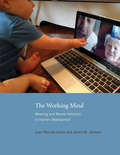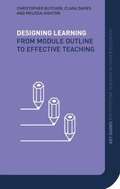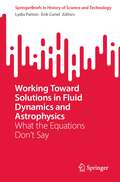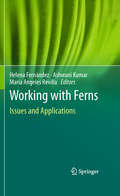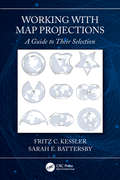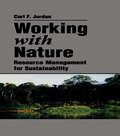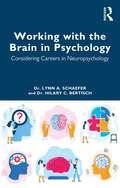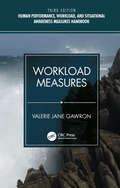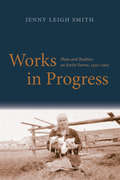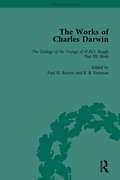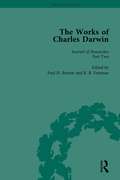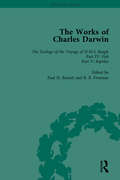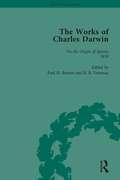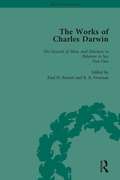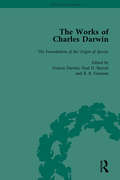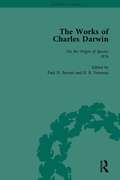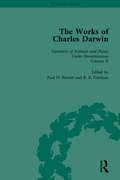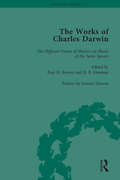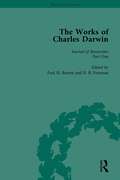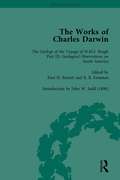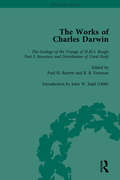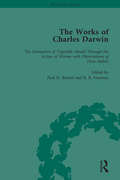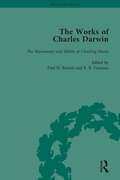- Table View
- List View
The Working Mind: Meaning and Mental Attention in Human Development
by Juan Pascual-Leone Janice M. JohnsonA general organismic-causal theory that explicates working memory and executive function developmentally, clarifying the nature of human intelligence.In The Working Mind, Juan Pascual-Leone and Janice M. Johnson propose a general organismic-causal theory that explicates working memory and executive function developmentally and by doing so clarifies the nature of human intelligence. Pascual-Leone and Johnson explain "from within" (that is, from a subject's own processing perspective) cognitive developmental stages of growth, describing key causal factors that can account for the emergence of the working mind as a functional totality. Among these factors is a maturationally growing mental attention.
Working One-to-one With Students: Supervising, Coaching, Mentoring, And Personal Tutoring
by Jane Clarke Kate Exley Gina Wisker Maria Antoniou Pauline RidleyWorking One-to-One with Studentsis written for Higher Education academics, adjuncts, teaching assistants and research students who are looking for guidance inside and outside the classroom. This book is a jargon-free, practical guide to improving one-to-one teaching, covering a wide range of teaching contexts, including mentoring students and staff, supervising dissertations and how to approach informal meetings outside of lectures. Written in an engaging, accessible style and grounded in experience, this book offers a combination of practical advice backed by relevant learning theory. Featuring a wealth of case studies and useful resources, the book covers areas including: Supporting students Encouraging independent learning Mentoring coaching and personal tutoring Developing peer groups and buddying programs Dealing with diversity, difficult students and ethical dilemmas supervising the undergraduate dissertation Supervising postgraduates in the arts, social sciences and sciences. This book is a short, snappy, practical guide that covers this key element of a lecturer's work. In the spirit of the series (KEY GUIDES FOR EFFECTIVE TEACHING in HIGHER EDUCATION) this book covers relevant theory that effectively informs practice.
Working Toward Solutions in Fluid Dynamics and Astrophysics: What the Equations Don’t Say (SpringerBriefs in History of Science and Technology)
by Lydia Patton Erik CurielThis book focuses on continuing the long-standing productive dialogue between physical science and the philosophy of science. Researchers and readers who want to keep up to date on front-line scientific research in fluid mechanics and gravitational wave astrophysics will find timely and well-informed analyses of this scientific research and its philosophical significance. These exciting frontiers of research pose deep scientific problems, and raise key questions in the philosophy of science related to scientific explanation and understanding, theory change and assessment, measurement, interpretation, realism, and modeling. The audience of the book includes philosophers of science, philosophers of mathematics, scientists with philosophical interests, and students in philosophy, history, mathematics, and science. Anyone who is interested in the methods and philosophical questions behind the recent exciting work in physics discussed here will profit from reading this book.
Working with Ferns
by Maria Angeles Revilla Helena Fernández Ashwani KumarThis timely volume brings a selection of chapters, each one composed by experts in their field. The chapters included cover a broad range from the knowledge of its biology and its contribution to understanding of plant development, useful protocols for propagation and conservation purposes, population genetics and environmental and theurapeutical applications. This wide spectrum of the contributions gives us a rapid idea of the enormous potential of this plant group.
Working with Map Projections: A Guide to their Selection
by Fritz Kessler Sarah BattersbyA map projection fundamentally impacts the mapmaking process. Working with Map Projections: A Guide to Their Selection explains why, for any given map, there isn’t a single "best" map projection. Selecting a projection is a matter of understanding the compromises and consequences of showing a 3-D space in two dimensions. The book presents a clear understanding of the processes necessary to make logical decisions on selecting an appropriate map projection for a given data set. The authors discuss the logic needed in the selection process, describe why certain decisions should be made, and explain the consequences of any inappropriate decision made during the selection process. This book also explains how the map projection will impact the map’s ability to fulfill its purpose, uses real-world data sets as the basis for the selection of an appropriate map projection, and provides illustrations of an appropriately and inappropriately selected map projection for a given data set. The authors take a novel approach to discussing map projections by avoiding an extensive inventory of mathematical formulae and using only the mathematics of map projections that matter for many mapping tasks. They also present information that is directly applicable to the process of selecting map projections and not tied to a specific software package. Written by two leading experts, this book is an invaluable resource for anyone studying or working with geospatial data, from students to experienced professionals, and will help readers successfully weigh the pros and cons of choosing one projection over another to suit a map’s intended purpose.
Working with Motors and Simple Machines, Student Guide
by National Science Resources Center Dane J. Toler Taina LitwakNIMAC-sourced textbook
Working With Nature
by JordanFirst Published in 1998. Routledge is an imprint of Taylor & Francis, an informa company.
Working with the Brain in Psychology: Considering Careers in Neuropsychology
by Lynn A. Schaefer Hilary C. BertischWorking with the Brain in Psychology: Considering Careers in Neuropsychology seeks to assist students in their career exploration, by introducing them early, in the contemplative stage of career planning, to the fascinating speciality of psychology known as neuropsychology. The text spends considerable time differentiating neuropsychology from alternative career paths, and provides personal accounts, contributions from neuropsychologists in various settings, and case examples of different patient populations to illustrate what it is like to train to become and work as a neuropsychologist. This text begins by describing what neuropsychology is, how it is situated within psychology, and for whom it could be a good fit. Suggestions are provided about how to engage in self-assessment in order to help choose a career. It goes on to review over a dozen similar and overlapping careers to illustrate how neuropsychology stands out. Quotes by professional neuropsychologists bring to life what "a day in the life" looks like in different settings, and the kinds of populations with whom neuropsychologists work are illustrated with case examples. This book then outlines how one becomes a neuropsychologist, including how to re-specialize from a different field. It also gives an honest appraisal of potential challenges that come with this career, and ends with anticipated future directions in the profession to look forward to. This book will be useful primarily for psychology-minded undergraduates and college graduates thinking of going on to graduate school for psychology, as well as for high school students interested in the brain and psychology. This book is further aimed at those considering a change of career from a related field into neuropsychology, as well as the guidance counselors and college career centers that assist with career planning.
Workload Measures
by Valerie Jane GawronThis book was developed to help researchers and practitioners select measures to be used in the evaluation of human/machine systems. The book includes definitions of human workload and a review of measures. Each measure is described, along with its strengths and limitations, data requirements, threshold values, and sources of further information. To make this reference easier to use, extensive author and subject indices are provided. Features Offers readily accessible information on workload measures Presents general description of the measure Covers data collection, reduction, and analysis requirements Details the strengths and limitations or restrictions of each measure, including proprietary rights or restrictions Provides validity and reliability data as available
Workout mit Baby: Was gut tut und fit hält
by Josef Kessler Constanze Bast-Kessler Jana KriegerFit nach der Geburt und ein zufriedenes Baby - das wünschen sich Mütter, Väter und Großeltern. Keine Zeit für das Fitnessstudio, keine Geräte zuhause? Das Kind will geknuddelt, bewegt oder beruhigt werden? Lassen Sie sich ein auf Übungen, mit denen Sie selbst mobil und stark bleiben und die Sie zusammen mit dem Baby ganz einfach durchführen können.Das Buch bietet mithilfe von Illustrationen Anleitungen für kurze Trainingseinheiten, die Sie spielerisch in den Alltag einstreuen können. Inklusive Aufwärmübungen, Muskeltraining und Dehnungen. Nebenbei erklären der Neuropsychologe und die Psychologin, wie sich das Kind nach der Geburt geistig und körperlich entwickelt und wie Sie fit bleiben, gemeinsam mit dem Baby viel Spaß haben und gleichzeitig dessen Motorik und Sinne ansprechen.
Works in Progress
by Jenny Leigh SmithThis book is the first to investigate the gap between the plans and the reality of the Soviet Union’s mid-twentieth-century project to industrialize and modernize its agricultural system. Historians agree that the project failed badly: agriculture was inefficient, unpredictable, and environmentally devastating for the entire Soviet period. Yet assigning the blame exclusively to Soviet planners would be off the mark. The real story is much more complicated and interesting, Jenny Leigh Smith reveals in this deeply researched book. Using case studies from five Soviet regions, she acknowledges hubris and shortsightedness where it occurred but also gives fair consideration to the difficulties encountered and the successes#151;however modest#151;that were achieved.
The Works of Charles Darwin: The Power Of Movement In Plants (The Pickering Masters #17)
by Paul H BarrettThe fifth volume in a 29-volume set which contain all Charles Darwin's published works. Darwin was one of the most influential figures of the 19th century. His work remains a central subject of study in the history of ideas, the history of science, zoology, botany, geology and evolution.
The Works of Charles Darwin: The Power Of Movement In Plants (The Pickering Masters #17)
by Paul H BarrettThe third volume in a 29-volume set which contain all Charles Darwin's published works. Darwin was one of the most influential figures of the 19th century. His work remains a central subject of study in the history of ideas, the history of science, zoology, botany, geology and evolution.
The Works of Charles Darwin: The Power Of Movement In Plants (The Pickering Masters #17)
by Paul H BarrettThe sixth volume in a 29-volume set which contain all Charles Darwin's published works. Darwin was one of the most influential figures of the 19th century. His work remains a central subject of study in the history of ideas, the history of science, zoology, botany, geology and evolution.
The Works of Charles Darwin: The Power Of Movement In Plants (The Pickering Masters #17)
by Paul H BarrettThe fifteenth volume in a 29-volume set which contain all Charles Darwin's published works. Darwin was one of the most influential figures of the 19th century. His work remains a central subject of study in the history of ideas, the history of science, zoology, botany, geology and evolution.
The Works of Charles Darwin: The Power Of Movement In Plants (The Pickering Masters #17)
by Paul H BarrettThe 21st volume in a 29-volume set which contain all Charles Darwin's published works. Darwin was one of the most influential figures of the 19th century. His work remains a central subject of study in the history of ideas, the history of science, zoology, botany, geology and evolution.
The Works of Charles Darwin: The Power Of Movement In Plants (The Pickering Masters #17)
by Paul H BarrettThe tenth volume in a 29-volume set which contain all Charles Darwin's published works. Darwin was one of the most influential figures of the 19th century. His work remains a central subject of study in the history of ideas, the history of science, zoology, botany, geology and evolution.
The Works of Charles Darwin: The Power Of Movement In Plants (The Pickering Masters #17)
by Paul H BarrettThe sixteenth volume in a 29-volume set which contain all Charles Darwin's published works. Darwin was one of the most influential figures of the 19th century. His work remains a central subject of study in the history of ideas, the history of science, zoology, botany, geology and evolution.
The Works of Charles Darwin: The Power Of Movement In Plants (The Pickering Masters #17)
by Paul H BarrettThe twentieth volume in a 29-volume set which contain all Charles Darwin's published works. Darwin was one of the most influential figures of the 19th century. His work remains a central subject of study in the history of ideas, the history of science, zoology, botany, geology and evolution.
The Works of Charles Darwin: The Power Of Movement In Plants (The Pickering Masters #17)
by Paul H BarrettThe 26th volume in a 29-volume set which contain all Charles Darwin's published works. Darwin was one of the most influential figures of the 19th century. His work remains a central subject of study in the history of ideas, the history of science, zoology, botany, geology and evolution.
The Works of Charles Darwin: The Power Of Movement In Plants (The Pickering Masters #17)
by Paul H BarrettThe second volume in a 29-volume set which contain all Charles Darwin's published works. Darwin was one of the most influential figures of the 19th century. His work remains a central subject of study in the history of ideas, the history of science, zoology, botany, geology and evolution.
The Works of Charles Darwin: The Power Of Movement In Plants (The Pickering Masters #17)
by Paul H BarrettThe ninth volume in a 29-volume set which contain all Charles Darwin's published works. Darwin was one of the most influential figures of the 19th century. His work remains a central subject of study in the history of ideas, the history of science, zoology, botany, geology and evolution.
The Works of Charles Darwin: The Power Of Movement In Plants (The Pickering Masters #17)
by Paul H BarrettThe seventh volume in a 29-volume set which contain all Charles Darwin's published works. Darwin was one of the most influential figures of the 19th century. His work remains a central subject of study in the history of ideas, the history of science, zoology, botany, geology and evolution.
The Works of Charles Darwin: The Power Of Movement In Plants (The Pickering Masters #17)
by Paul H BarrettThe 28th volume in a 29-volume set which contain all Charles Darwin's published works. Darwin was one of the most influential figures of the 19th century. His work remains a central subject of study in the history of ideas, the history of science, zoology, botany, geology and evolution.
The Works of Charles Darwin: The Power Of Movement In Plants (The Pickering Masters #17)
by Paul H BarrettThe eighteenth volume in a 29-volume set which contain all Charles Darwin's published works. Darwin was one of the most influential figures of the 19th century. His work remains a central subject of study in the history of ideas, the history of science, zoology, botany, geology and evolution.
